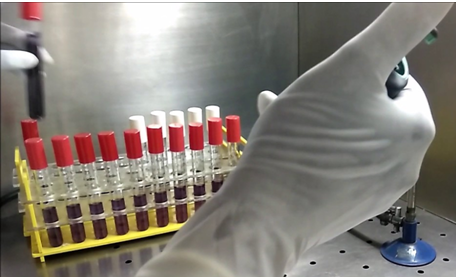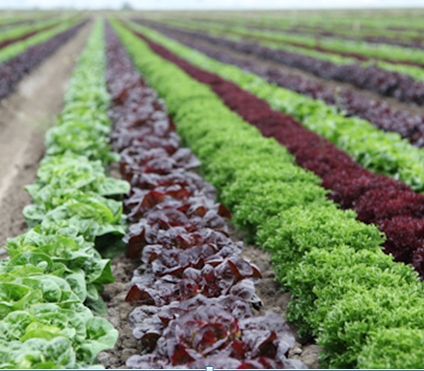How to assure safer leafy greens, the role of water testing and why traceability is not sufficient

According to the NY Times, the FDA is worried about a repeat of romaine lettuce outbreak this year.
The FDA strongly encourages the entire leafy greens supply chain to adopt state-of-the-art technology for traceability in order to assure quick, accurate and easy access to the whole supply chain and to enable tracing back the products to their original farms. An important element of stopping an outbreak is the ability to identify specific farms or ranches and dates of harvest for products that contribute to outbreaks if product has been commingled. It is important to be able to determine which farm(s) and growing region(s) are responsible for supplying the contaminated products and the time frame when these products were supplied. FDA has requested increased funding in its 2020 budget to allow for the increased use of the blockchain technology. However, tracing products is not the entire solution. The main relevant issue is how to avoid contamination in the first place.
The failure of the current measures to stop outbreaks shows the lack of a clear solution, and even regulators aren’t sure how to fix the problem, said Timothy Lytton, a food safety expert at Georgia State University. James Gorny, a senior advisor for produce safety at the Food and Drug Administration, wrote to the agency leaders that the way the leafy green industry tests water is “unacceptable” and needs to be changed.
Why water testing is a key
Both romaine lettuce outbreaks of 2018 were linked to irrigation water. In both cases, the FDA never confirmed how the water became contaminated.
“Water used during the production of fresh fruits and vegetables represents a potential pathway for contamination with human pathogens,” said Gretchen Wall, Cornell’s Produce Safety Alliance coordinator
What methods and specifications should be used for water testing?
The FDA requirements for irrigation water are based on two values, the geometric mean (GM) and the statistical threshold (STV).
The geometric mean (GM) measures the average amount of generic E. coli in a water source. The STV reflects the amount of variation in the E. coli levels, which can be caused by events such as a heavy rainfall. It measures expected deviations from the average for a water source. Both pieces of information provide a more complete description of the water quality than either one alone. For untreated water used for irrigation, the GM of samples is less than 126 CFU/100 ml of generic E. coli, and an STV of less than 410 CFU/100 ml.

In 2011, with the approval of FSMA, the FDA proposed several EPA-approved tests to detect generic E. coli in irrigation water. One of these methods mTEC is a membrane filtration method for thermo- tolerant E. coli (44.5°C) and utilizes beta-D-glucuronidase as a differentiating agent. The method is not widely available from contract laboratories. It requires that the analysis starts within 6–8 hours of sample collection, causing a problem for produce growers located in remote locations.
Jean E. McLain et.al. at the University of Arizona used a side-by-side comparison of mTEC and the commercial kit of Colilert, by three laboratories. “Both methods have shown excellent results as long as water samples are clean. But because these methods were developed for drinking water, they may not work as well with environmental water samples, which can contain salts, sediments, and naturally-occurring microbes.” She said.”But when microbes were added, the consistency fell apart,” McLain reported. “For both the mTEC® and Colilert® tests, two labs found the levels of generic E. coli were very high and way above the safety standard. But for each test, one of the three labs showed that the water quality was within the safety threshold.” Therefore, methods that work well with irrigation water need to be identified.
The FDA allows a variety of other quantitative methods to be
The FDA requires testing of initially 20 surface water samples collected over 2-4 years. Thereafter the farms need to test 5 samples/year. The microbial quality of the water (GM and STV values) will be updated yearly based on the five new samples and 15 of the most recent earlier samples.
One important question is the correlation between generic E. coli as an indicator and
Cost implications

The costs of testing and maintaining microbial quality standards can be expensive. The FDA Estimates that water testing may cost producers about $37 million annually. For a small
Delay in implementation
Some of the FSMA water testing provisions are difficult to understand and challenging to implement in farms, making it hard for farms to comply. On March 18, the FDA delayed a regulation requiring produce growers to test water for E. coli for large farms to January 2022, to small farms to January 2023, and to very small farms to January 2024.
During this time extension the FDA plans to learn more from farmers and state regulators to ensure that the standards will be as practical and effective as possible for all farming operations.
Meanwhile, the FDA posted a list of additional testing methods from EPA and other public health entities that it has determined are equivalent to the method incorporated by reference (Method 1603) in the Produce Safety Rule.
